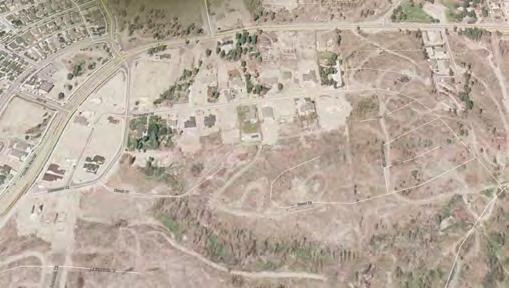In regions of moderate hazard, we estimate the benefit-cost ratios to be up to 5:1 for new construction and about 2:1 for retrofit by purely structural mitigation. Benefit-cost ratios are three times higher if one can rely on vegetation management. In low-hazard locations, retrofit is not cost-effective, but new construction that satisfies the National WUI Guide through structural means also has a benefit-cost ratio of 5:1, thanks to lower costs and a longer remaining useful life. These benefit-cost ratios account for climate change, which tends to increase future losses and, therefore, increases benefits and benefit-cost ratios. The climate projections considered here suggest that climate change will increase average fire losses and, therefore, benefit-cost ratio by about 40% relative to a stationary 2010 climate. Demand surge (the temporary local increase in construction costs associated with higher labour costs) further increases benefits by about 10%. 5.1.5 Community Costs Vary by Need Table 43 recaps the community costs estimated here. Some apply on a household basis, some by neighbourhood, and some by municipality. Some are capital costs, while others apply annually, as noted in the table. Some are highly approximate and may only be accurate on an order-ofmagnitude basis. Table 43. Community costs to satisfy recommendations of the National WUI Guide Item
Cost
Comment
Policy analysis, develop plans
$1.50 per household per year
Tax consequences
None foreseen
Long-term increase and stability in provincial and national tax revenues per Table 41.
Paving roads in unpaved neighbourhoods
$5,000 per household
Only count households in unpaved neighbourhoods.
Add access routes in neighbourhoods
$500,000 per access route
One for neighbourhoods of 101 to 600 households with only one access route, one for neighbourhoods of 601 or more households, and two for neighbourhoods of 601 or more households and one access route.
Add bridge on access route
$200,000 per bridge
Two-lane stream crossing on a neighbourhood access route.
Water supply
$30,000 per household
Only for neighbourhoods without sufficient piped water and fire hydrants.
Underground electricity
$30,000 per household
Optional; least likely electricity options to be used.
Non-combustible utility poles
$4,000 per household
Appears to be optional.
Vegetation management near power lines
$6 per household per year
Bus, watercraft, and emergency communication plans
$1,500 per municipality per year
Firefighting response planning, evacuation planning, and resources
$7,500 per municipality per year
Emergency communication equipment, planning, and training
None foreseen
Public education development and implementation
$1,500 per municipality per year
89








